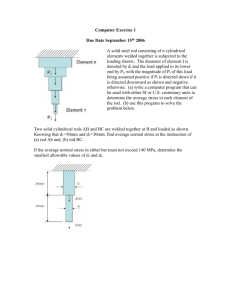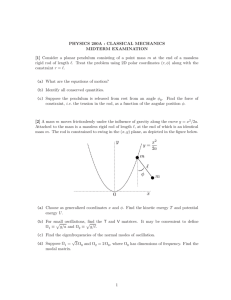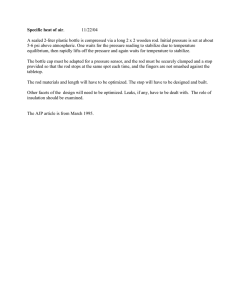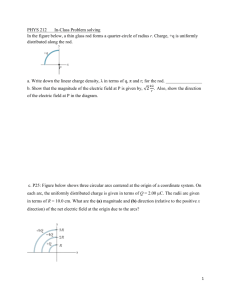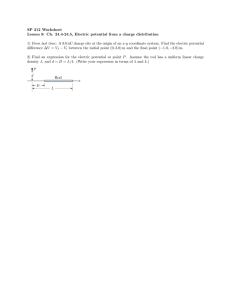2.004 Problem Set No. 5 Problem 1 MODELING
advertisement
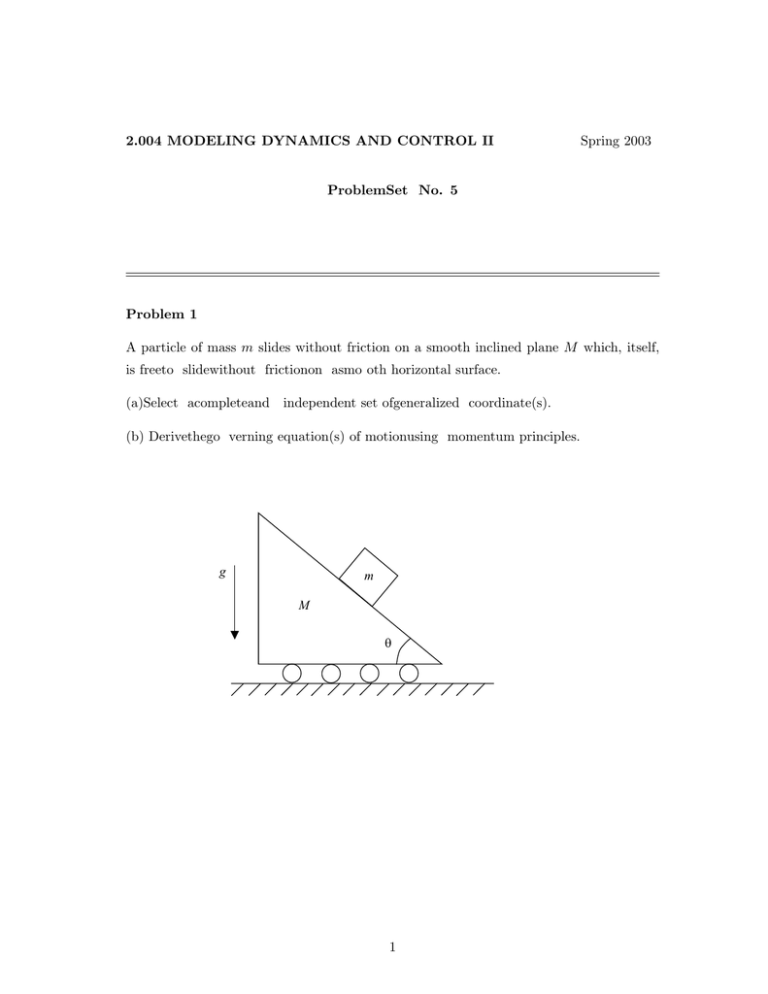
2.004 MODELING DYNAMICS AND CONTROL II Spring 2003 ProblemSet No. 5 Problem 1 A particle of mass m slides without friction on a smooth inclined plane M which, itself, is freeto slidewithout frictionon asmo oth horizontal surface. (a)Select acompleteand independent set ofgeneralized coordinate(s). (b) Derivethego verning equation(s) of motionusing momentum principles. g m M θ 1 Problem 2 A disk or radius r and mass m rolls without slipping on the surface of a stationary half-cylinder of radius R, as shown below. Because of the rolling constraint, this is a one-degree-of-freedomsystem, and theangle θ is a convenient generalized coordinate. (a) Expressthe angular velocity of thedisk in terms of θ̇. (b) Calculate the kineticenergyof the disk. Y m C r R θ X 2 Problem 3 Falling Rod. A rigid rod AB has length L, mass m, and centroidal moment of inertia IC = mL2 /12. The rod is constrained to remain in the plane of the sketch and is com­ pletely located by giving the coordinates x and y of the mass center C, with respect to an inertial reference system, and the angle θ that the rod makes with the vertical. The rod is placed with the end B in contact with the floor and the angle θ equal to 30 degrees and released from rest. Assume that, as the rod falls under the influence of gravity, the end B always remains in contact with the floor, and that there is no frictional force between the floor andthe rod at B. (a) The generalized coordinates x, y, and θ are complete but not independent under the constraints described below. Select a set of complete and independent generalized coordinates to describethe location ofthe falling rod. (b) Derivetheequation(s) ofmotion. Itisnot necessarytosolv etheequation(s). (c) Determine the angular acceleration θ¨ of the rod immediately after it is released from rest. (d) Determine the force between the floor and the rod at B, immediately after the rod is released fromrest. A g θ C B Figure 1: Rod falls under the influence of gravity 3
